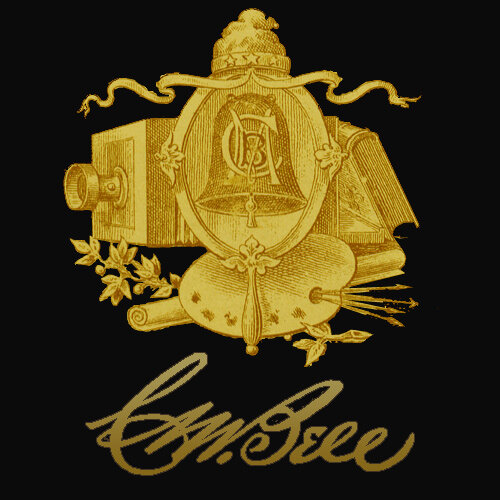
“The Post in the Centre of My House”: Douglass Mourns His Wife Anna
“The Post in the Centre of My House”
Douglass Mourns His Wife Anna | by Leigh K. Fought
In August 1882 Parker Pillsbury wrote to express his sympathies to his long-time associate and some-time adversary Frederick Douglass on the death of Douglass’s wife Anna. Melancholic poetry infused Douglass’s response, tinged with bittersweet irony that neither probably perceived. After all, while Pillsbury extended his condolences to Frederick on the loss of Anna, Anna had lost Frederick to the abolitionist movement on the very day the two men had met forty years earlier in New Bedford, Massachusetts. Furthermore, Pillsbury had been the instrument of that bereavement. Douglass vividly recalls that antislavery society meeting in his reply to Pillsbury.1
Pillsbury also remembered the meeting in New Bedford’s Liberty Hall on August 9, 1841. In his autobiography, published the same year as Anna Douglass’s death, he recalls that the as-yet unknown Douglass had given a speech that electrified the Bristol Anti-Slavery Society meeting. Pillsbury and his companions, all agents for the American Anti-Slavery Society, invited him to their meeting on Nantucket the next day. There Douglass accepted a new job as a paid lecturer for the Massachusetts Anti-Slavery Society. From that day on, his fame grew and he spent ever increasing lengths of time on the road.2
Pillsbury noted Anna accompanied her husband to the Nantucket meeting, but Frederick did not mention her attendance in his own autobiography.3 Whether or not she did attend had little bearing on Anna’s subsequent involvement in her husband’s work. The wives of abolitionists in similar positions never traveled with their itinerant husbands, nor were they expected to, and childbearing ultimately kept women speakers close to home. Anna was already two months pregnant with the third of five Douglass children when her husband took to the lecture circuit. She also shared in the financial responsibilities of the household, not only in management but also by taking in laundry and, later, by sewing piecework and keeping boarders. Early in her husband’s career, she joined other abolitionist wives in the Lynn Ladies’ Anti-Slavery Society. But while in Rochester and later in her life she did not participate in any formal organized reform activities beyond keeping those boarders, who included abolitionists, black civil rights activists, and many of the self-emancipated of the Underground Railroad. With her husband so often absent, even after settling into his newspaper editorship, Anna became a self-sufficient manager of their household, so much so that their daughter Rosetta ended up remembering her father as “mother’s honored guest.” 4 Frederick was necessary to the existence of their household, but not its operation.
Along with the loss of her husband to the road came the loss of her husband to new worlds that Anna had neither the ability nor the interest to enter. When the young pair had met in Baltimore in 1838, they could never have envisioned the turn their lives would take a mere three years later at that anti-slavery society meeting in New Bedford. When Anna Murray had financed Frederick’s escape and joined him in marriage, the young couple had probably envisioned a future in the black working class. Anna, although free, had worked for wages since she was at least sixteen and seemed to have conveyed to her daughter that her opportunity for reading and education was lost by the time she married. 5 They were for her already literate husband and her children to pursue.
For Frederick reading and education formed the bedrock of his sense of a liberated self. As he met a wider range of formally educated people, he discovered worlds of literature and philosophy heretofore unknown. His ability to synthesize new concepts into his ideology astounded and then alienated both his wife and new-found associates such as Pillsbury. The latter criticized the young abolitionist for abandoning his early anti-slavery strategies. The former watched the scrappy, young caulker she had met in Baltimore become a sophisticated intellectual always pursuing new ideas, and a man who found reading not merely a means to an economic end, but a pleasure unto itself.
As for Anna, her sense of self came through her ability to excel in the work she had done since she was sixteen, her pride in her own home, and her role as wife and mother. She became, in this way, the model of True Womanhood, cherishing the separate, domestic, and private feminine sphere. This was part of the conservatism to which her husband referred in his letter to Pillsbury. Yet, as Frederick became a public man, more people intruded upon their household as part of his work and out of curiosity. Anna, in her role as guardian of the private sphere, protected his and their family’s privacy. Privacy, domesticity, and the model of femininity touted by the prescriptive literature of True Womanhood excluded black women. Therefore, Anna’s embrace of them was itself subversive.6
The women with whom Frederick associated in reform circles, who became his friends, and whom he encouraged their daughter to emulate represented a new brand of womanhood who pushed against those types of roles, demanding more education, better and equal employment outside of the home, and suffrage. Douglass’s second wife, Helen Pitts, fit this mold.
Over the decades, migraine, arthritis, and neuralgia had plagued Anna. The housework that she had always insisted on doing herself had taken its toll on her body, as did the stress of marriage to a man who constantly put himself in danger and strained the boundaries of their household. Confined to bed after a stroke had paralyzed her in July 1882, she persisted in commanding the younger women of the family in the daily routine, leaving no question as to who remained in charge of the household until she lost consciousness in her final days. The end came on August 4, 1882. At her bedside, her husband cried to their daughter, “Ah! Rosa, if she could have only lived a few years longer.” 7
Anna and Frederick Douglass would have seen their forty-fourth wedding anniversary on September 15. Of all people, she had known him longest, from his days as “Fred Bailey,” the enslaved teenager with the swagger to brag that he intended to become a senator, to the sage activist courted by presidents. As in his letter to Pillsbury, in writing to another friend, Douglass affirmed that Anna was the “post in the center of my house and held us together.” 8 Biblically and in nineteenth-century popular culture, the “house” had the connotation of both a dwelling and a sanctuary, and the central pillar bore the load of the entire structure. For the time being, with her loss, all seemed to collapse. Anna’s death came as the most personal “shock and calamity.” The scope of his activist life, which had accelerated when he met Pillsbury, had nearly spanned the length of his marriage to Anna, the woman who had made that life, in a large part, possible.
55 Transcript of a letter from Frederick Douglass to [Parker] Pillsbury, August 20, 1882
Washington D.C. August 20. 1882
My dear Friend Pillsbury,
No differences of opinion, no criticisms upon my course which you may have been called upon to make, have ever disturbed for a moment the “deep sea” of my reverence and affection for your value and character, since I first saw your face, heard your voice, and felt your amazing power of thought and feeling, in the old Liberty Hall New Bedford, now more than forty years ago. From that hour until now there has been no break in my thought and feeling towards you. Thanks for your kind letter. Mrs. Douglass was all you say of her and more. She was the post in the centre of my house. Different we were in many things. She was conservative and I radical, she was for the old I for the new, she did not care to learn to read– and was thus measurably shut out from the things that interested me but in all the duties of mother and wife, she deserves all you have said of her. Two people could not well live together forty and four years as we have done, without the death of either being a shock and a calamity.
With best wishes for you and yours
I am yours sincerely
Fredk. Douglass
1. The letter is addressed to “Friend” Pillsbury, probably Parker Pillsbury, a fellow abolitionist.
2. Parker Pillsbury, Acts of the Anti-Slavery Apostles (Concord NY, 1883), 324–328. Douglass’s own differing memories of the New Bedford and Nantucket meetings can be found in his later two autobiographies: My Bondage and My Freedom, ed. John Blassingame (New Haven: Yale University Press, [1855] 2003), 205–206, and The Life and Times of Frederick Douglass, ed. John R. McKivigan, et al. (New Haven: Yale University Press, [1881, 1892] 2012), 1:167–168.
3. Pillsbury, Acts of the Anti-Slavery Apostles, 325.
4. The most intimate view into Anna Douglass’s life comes from her daughter, Rosetta Douglass Sprague, My Mother As I Recall Her (1900), Family Papers, Frederick Douglass Papers, Library of Congress. See also “Anna Murray, Mrs. Frederick Douglass, 1810–1848,” Chapter 2 in Leigh Fought, Women in the World of Frederick Douglass (New York: Oxford University Press, 2017), 41–69.
5. See the debate between Carleton Mabee and Margaret Washington about Sojourner Truth and literacy, in which Washington also mentions Anna Douglass, for comparison. Carleton Mabee, “Sojourner Truth, Bold Prophet: Why Did She Never Learn to Read?” New York History 69, 1 (1988): 55–77; Margaret Washington, Sojourner Truth’s America (Urbana: University of Illinois Press, 2009), 133, 216, 409–10 n.13..
6. Barbara Welter, “The Cult of True Womanhood, 1820–1860,” American Quarterly 18, 2, part 1 (Summer 1966): 151–174. See Erica Ball, To Live an Antislavery Live: Personal Politics and the Antebellum Black Middle Class (Athens: University of Georgia Press, 2012).
7. Rosetta Douglass Sprague to Susan B. Anthony, Takoma Park [DC], January 27, 1896, Frederick Douglass Papers, Moorland-Spingarn Collection, Howard University.
8. Frederick Douglass to Sarah M. Loguen, August 12, 1882, quoted in Philip S. Foner, ed., Frederick Douglass on Women’s Rights (New York: DaCapo Press, 1992), 22.


